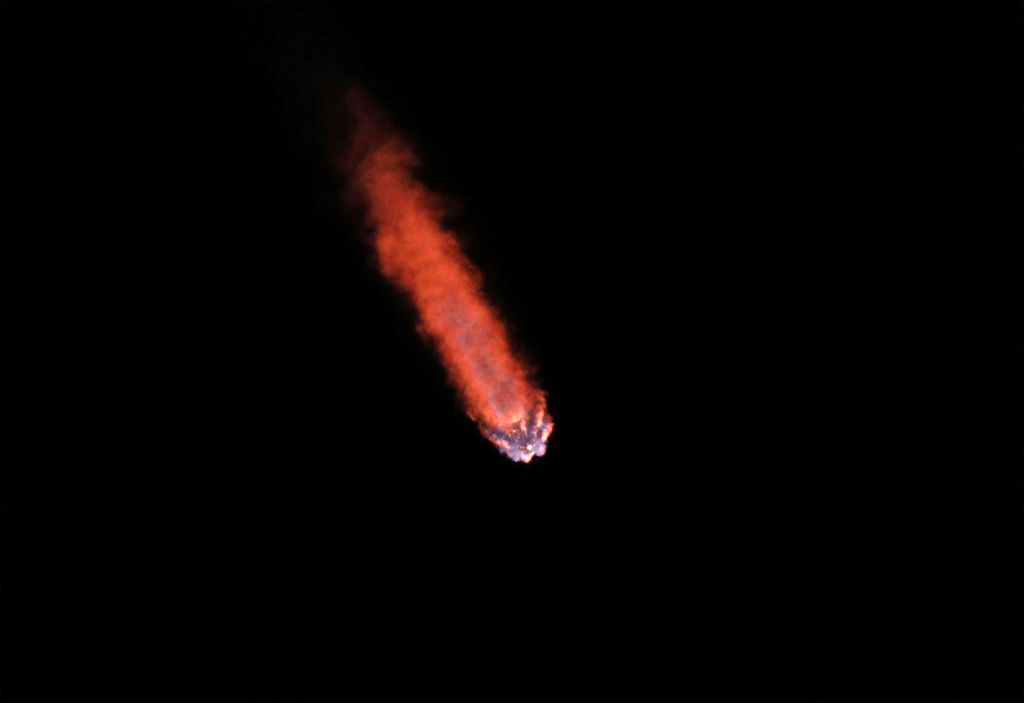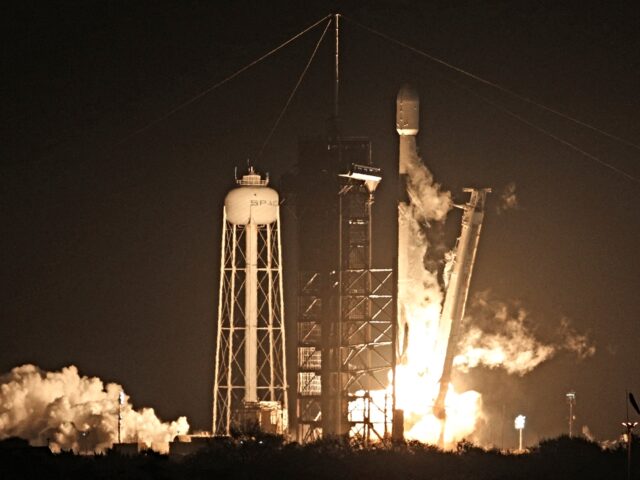Another week, another private U.S. company launches a Moon shot. That was the result early Thursday morning as SpaceX’s Falcon rocket blasted off and slipped the surly bonds of earth, setting course for a lunar touchdown.
If successful, it will be the first U.S. moon landing in five decades after an eight-day journey into the unknown.
The launching comes a month after a U.S. rival’s lunar lander missed its mark and came crashing back after burning up on reentry, as Breitbart News reported.
Clearly an omen for 2024. https://t.co/ffnRKdfl0p
— Breitbart News (@BreitbartNews) January 15, 2024
It also marks the latest attempt by the U.S. to regain its space dominance, unseen since the Apollo program ended more than five decades ago.
AP reports NASA, the main sponsor with experiments on board, is hoping for success as it seeks to jumpstart the lunar economy ahead of astronaut missions.
SpaceX’s Falcon rocket blasted off from NASA’s Kennedy Space Center, dispatching Intuitive Machines’ lunar lander on its way to the Moon, 230,000 miles away.
The lander resembled a stunning six-pointed star jewel — each point a leg — as it successfully separated from the upper stage and drifted off into the black void with the blue Earth far below, the AP report sets out.
A touchdown attempt is planned to occur Feb. 22 after a day in lunar orbit.

A SpaceX Falcon 9 rocket lifts off from launch pad LC-39A at the Kennedy Space Center with the Intuitive Machines’ Nova-C moon lander mission, in Cape Canaveral, Florida, on February 15, 2024. (GREGG NEWTON/AFP via Getty)
Only five countries — the U.S., Russia, China, India and Japan — have scored a lunar landing and no private business has yet done so.
“There have been a lot of sleepless nights getting ready for this,” Intuitive Machines’ co-founder and chief executive Steve Altemus said before the flight.
The Houston-based company aims to put its 14-foot tall, six-legged lander down just 186 miles shy of the Moon’s south pole, equivalent to landing within Antarctica on Earth.
This region — full of treacherous craters and cliffs, yet potentially rich with frozen water — is where NASA plans to land astronauts later this decade. The space agency said its six navigation and tech experiments on the lander can help smooth the way.
NASA further outlined in a statement it has six instruments aboard the Nova-C lander that will conduct scientific research and demonstrate technologies to better understand the lunar surface and improve landing precision for missions to the lunar south polar region.

A SpaceX Falcon 9 rocket soars into orbit from the Kennedy Space Center on the Intuitive Machines’ Nova-C moon lander mission, in Cape Canaveral, Florida, on February 15, 2024. The IM-1 mission is part of NASA’s Commercial Lunar Payload Services (CLPS) program to understand more about the Moon’s surface ahead of the coming Artemis missions. (GREGG NEWTON/AFP via Getty Images)
The spacecraft will cease operations after a week on the surface.
“The payloads will collect data on how the plume of engine gasses interacts with the moon’s surface and kicks up lunar dust, investigate radio astronomy and space weather interactions with the lunar surface, test precision landing technologies and measure the quantity of liquid propellant in Nova-C propellant tanks in the zero gravity of space,” NASA explained.
It was SpaceX’s 14th launch so far this year.
AP contributed to this report

COMMENTS
Please let us know if you're having issues with commenting.